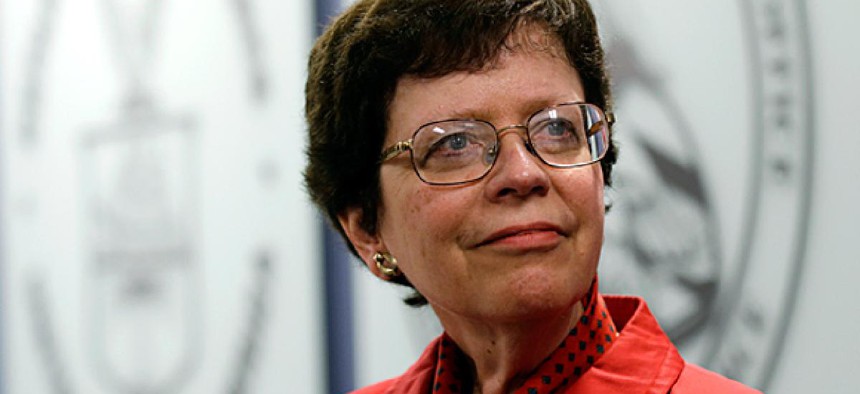
Acting United States Commerce Secretary Rebecca Blank Paul Sancya/AP
Federal programs to aid entrepreneurs overlap
GAO finds 52 separate offerings across agencies are confusing to businesses.
Agency efforts to support private entrepreneurs are ineffectual and fragmented, according to Government Accountability Office research on 52 programs in such departments as Agriculture, Commerce and Housing and Urban Development.
In a paper dated Aug. 23, auditors identified overlap among initiatives to offer grants, loans and technical training to businesses and found that too few agencies track the assistance they provide, resulting in a failure of 19 programs to meet performance goals.
The report said Agriculture and the Small Business Administration, for instance, “entered into a formal agreement in 2010 to coordinate their efforts to support businesses in rural areas; however, the agencies’ programs that can support startup businesses -- such as USDA’s Rural Business Enterprise Grant program and SBA’s Small Business Development Centers -- have yet to determine roles and responsibilities, find ways to leverage each other’s resources, or establish compatible policies and procedures.”
Too many agencies, auditors said, rely on data summaries in narrative format rather than on data that can be easily aggregated or analyzed.
While some agencies have taken initial steps to improve how they collaborate by entering into formal agreements, GAO said, many have not pursued a number of collaborative practices GAO has previously identified. These include joint strategies to leverage resources, determine roles and identify common outcomes.
In comments on a draft of the report, some agency heads said auditors had misrepresented their work and disagreed with the definition of duplication. For example, acting Commerce Secretary Rebecca Blank, suggested GAO look into the need for “varied but complementary” programs to address the special circumstances of entrepreneurs. “What may appear as duplication at a higher level is in reality a portfolio of distinct services meeting unique needs,” Blank said.
The GAO report was part of a series documenting duplication in federal programs.







